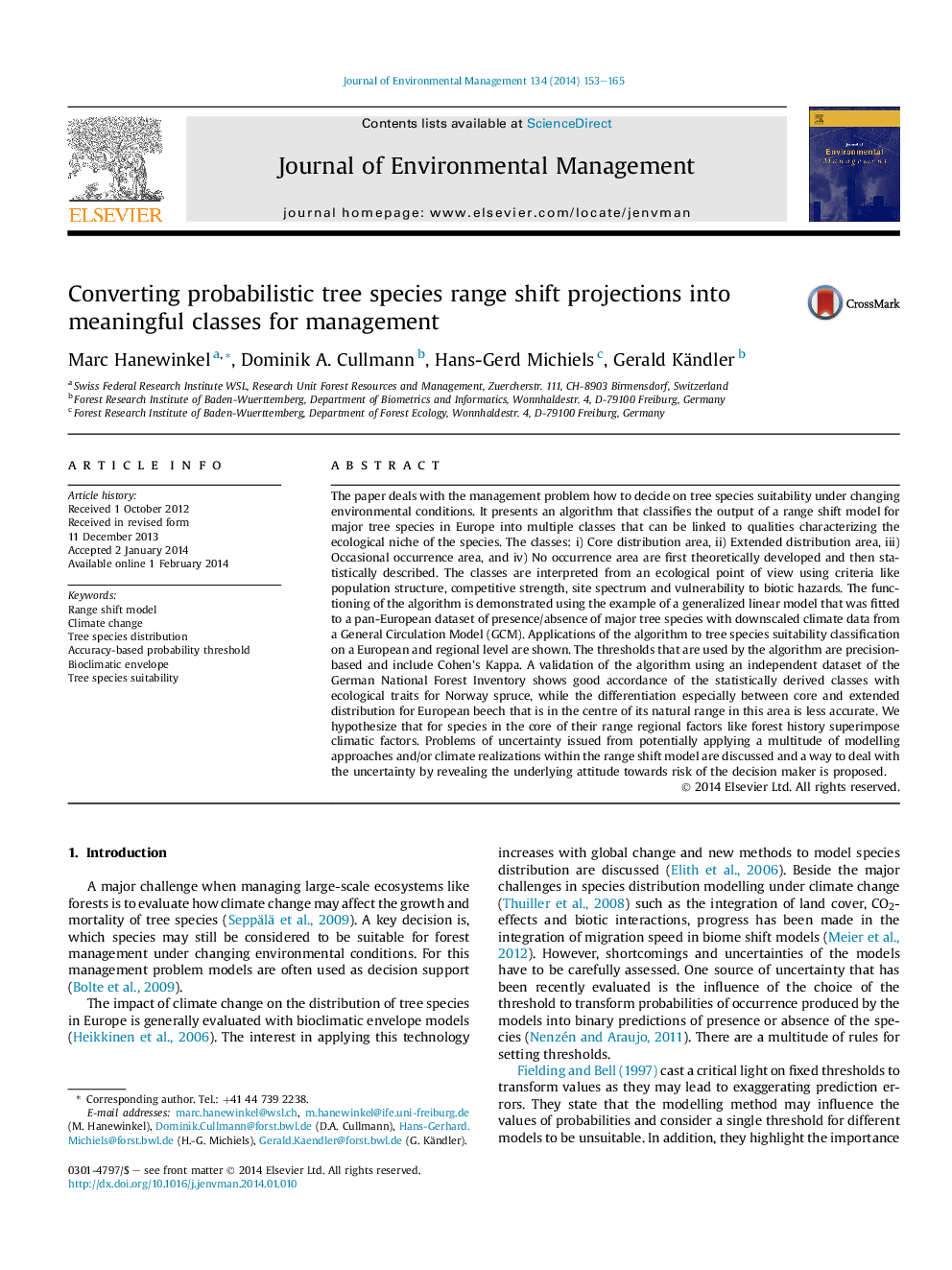| کد مقاله | کد نشریه | سال انتشار | مقاله انگلیسی | نسخه تمام متن |
|---|---|---|---|---|
| 1055994 | 1485278 | 2014 | 13 صفحه PDF | دانلود رایگان |
• Decision making on choice of European tree species under climate change.
• An algorithm converting the output of range shift models into meaningful classes.
• It overcomes common problems of binary thresholds of range shift models.
• The algorithm is validated based on national inventory data.
• Risk attitude of decision makers on species choice using the algorithm.
The paper deals with the management problem how to decide on tree species suitability under changing environmental conditions. It presents an algorithm that classifies the output of a range shift model for major tree species in Europe into multiple classes that can be linked to qualities characterizing the ecological niche of the species. The classes: i) Core distribution area, ii) Extended distribution area, iii) Occasional occurrence area, and iv) No occurrence area are first theoretically developed and then statistically described. The classes are interpreted from an ecological point of view using criteria like population structure, competitive strength, site spectrum and vulnerability to biotic hazards. The functioning of the algorithm is demonstrated using the example of a generalized linear model that was fitted to a pan-European dataset of presence/absence of major tree species with downscaled climate data from a General Circulation Model (GCM). Applications of the algorithm to tree species suitability classification on a European and regional level are shown. The thresholds that are used by the algorithm are precision-based and include Cohen's Kappa. A validation of the algorithm using an independent dataset of the German National Forest Inventory shows good accordance of the statistically derived classes with ecological traits for Norway spruce, while the differentiation especially between core and extended distribution for European beech that is in the centre of its natural range in this area is less accurate. We hypothesize that for species in the core of their range regional factors like forest history superimpose climatic factors. Problems of uncertainty issued from potentially applying a multitude of modelling approaches and/or climate realizations within the range shift model are discussed and a way to deal with the uncertainty by revealing the underlying attitude towards risk of the decision maker is proposed.
Figure optionsDownload as PowerPoint slide
Journal: Journal of Environmental Management - Volume 134, 15 February 2014, Pages 153–165
